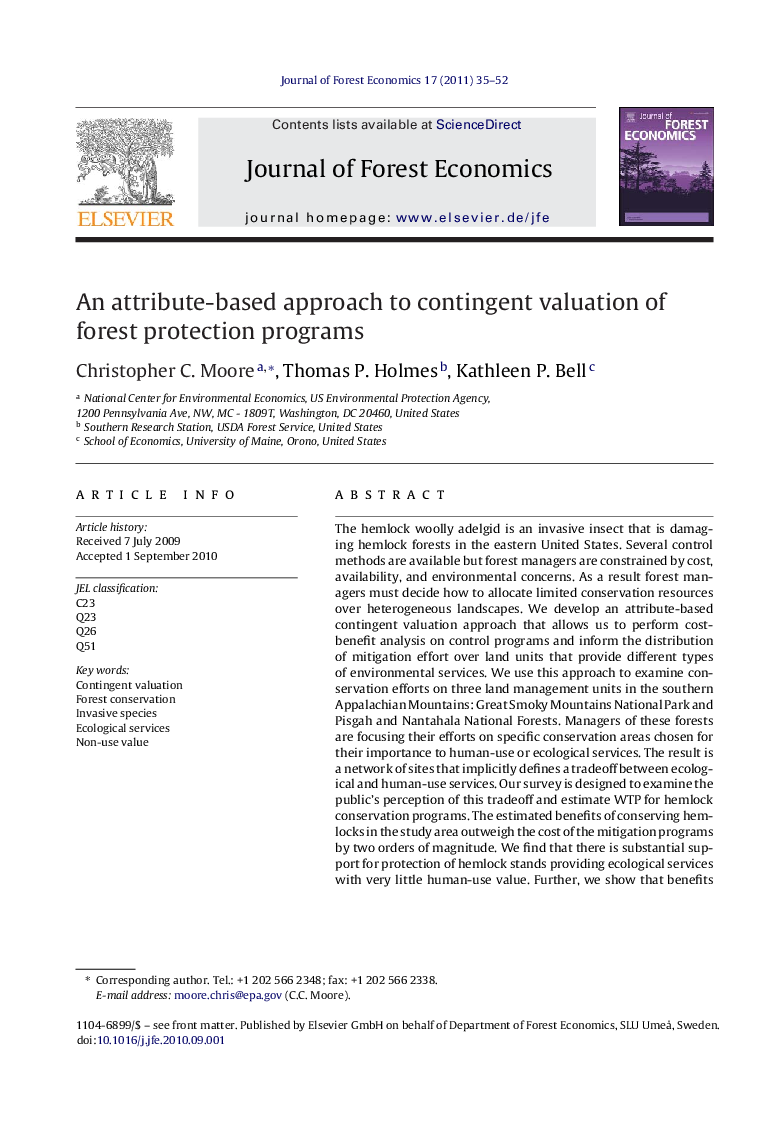| کد مقاله | کد نشریه | سال انتشار | مقاله انگلیسی | نسخه تمام متن |
|---|---|---|---|---|
| 92330 | 159946 | 2011 | 18 صفحه PDF | دانلود رایگان |

The hemlock woolly adelgid is an invasive insect that is damaging hemlock forests in the eastern United States. Several control methods are available but forest managers are constrained by cost, availability, and environmental concerns. As a result forest managers must decide how to allocate limited conservation resources over heterogeneous landscapes. We develop an attribute-based contingent valuation approach that allows us to perform cost-benefit analysis on control programs and inform the distribution of mitigation effort over land units that provide different types of environmental services. We use this approach to examine conservation efforts on three land management units in the southern Appalachian Mountains: Great Smoky Mountains National Park and Pisgah and Nantahala National Forests. Managers of these forests are focusing their efforts on specific conservation areas chosen for their importance to human-use or ecological services. The result is a network of sites that implicitly defines a tradeoff between ecological and human-use services. Our survey is designed to examine the public's perception of this tradeoff and estimate WTP for hemlock conservation programs. The estimated benefits of conserving hemlocks in the study area outweigh the cost of the mitigation programs by two orders of magnitude. We find that there is substantial support for protection of hemlock stands providing ecological services with very little human-use value. Further, we show that benefits from the current mitigation strategy could be increased by shifting effort to protect more ecological services at the expense of sites that generate primarily human-use value.
Journal: Journal of Forest Economics - Volume 17, Issue 1, January 2011, Pages 35–52